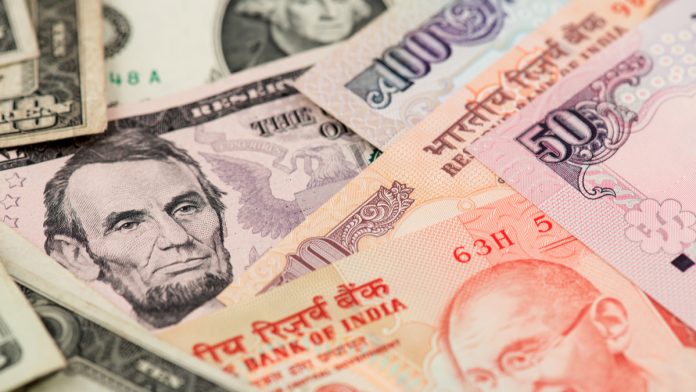- Indian Rupee (INR) declines after State Bank of India Research predicts -40% GDP in Q1
- Fitch downgrades FY21 GDP outlook to -5% v +0.8% growth previously
- US Dollar (USD) lifts on safe haven flows as US – Sino tensions rise over Hong Kong
- At 11:15 UTC, USD/INR is trading +0.2% at 75.60 >> Real time exchange rates
After two consecutive days of gains, the Indian Rupee is moving lower versus the US Dollar on Wednesday. The Rupee settled in the previous session +0.5% at 75.45, slightly down from its four day high of 75.40 reached earlier in the session.
Today, at 11:15 UTC, USD/INR is trading +0.2% at 75.60. This is approximately mid-way between the daily traded range of 75.45 – 75.76 amid concerns over the impact of the coronavirus crisis on the Indian economy and cooling US – China relations.
The Indian economy faces a huge loss in the June quarter, potentially as large as 40%, acording to the State Bank of India (SBI) Research. A contraction of -6.8% is expected in the fiscal year FY21 after a recovery in the second quarter, with growth of 7% and “much better” growth numbers in the third and fourth quarters.
Meanwhile, domestic rating agency Crisil, said yesterday that they expect a first quarter contraction of -25%, in India’s worst even recession. Crisil forecasts a -5% GDP contraction in FY21. International rating agency Fitch also downgraded its GDP forecast for India to -5%, compared to an earlier prediction of +0.8% growth.
The downbeat outlook for the Indian economy weighed on demand for the Rupee, as did broad risk off sentiment in the forex markets.
Risk off trading boosted demand for the safe haven US Dollar. US – Chinese relations continued to sour as China looks to move ahead with imposing a security law on Hong Kong, restricting liberties in the financial hub. President Trump has warned that a response and sanctions against Chinese officials, businesses and financial institutions are being prepared.
Global growth is already in the doldrums. The fear is that rising tensions between the two largest economies could hamper the post-coronavirus economic recovery.





